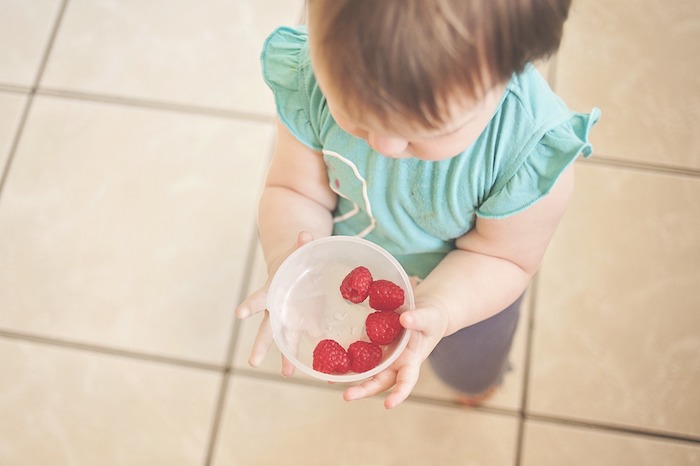“We are what we eat” is a small but very influential phrase. It quickly puts forward the crux of this entire article. This article discusses what nutrition means, why is it essential, and what happens when you do not consume the right amount of nutrition.
Let’s begin with the definition of the term ‘Nutrition’.
Nutrition refers to eating and drinking food items to get nutrients from within that are important for the growth and functioning of our body. The different food items we consume daily are sources of various nutrients that we need to operate daily and grow healthy. To maintain a healthy lifestyle, we must consume the right amount of nutrients. This is what we call, “a balanced diet.” This brings us to the question that what is a balanced diet?
A balanced diet is a diet that includes many nutrients required for the growth and development of our body. A balanced diet for a growing child differs from what a grown-up adult would usually has as his or her diet. The components and quantity of nutrients in a balanced diet vary as per the needs of the individual’s body. Here is a list of nutrients that you should look for on/in your food plate:
1. Amino acids
2. Carbohydrates
3. Proteins
4. Fats
5. Glucose
6. Sodium
Keep in mind that all nutrients are not suitable for your health if consumed excessively. For example, sodium plays an integral part in regulating the number of fluids in your body and helping your muscles and nerves to operate well. But it is harmful if consumed in higher quantities, as it may cause dehydration. The trick to a balanced diet is to consume only the right amount of nutrients required by the body.
What is Malnutrition?
Malnutrition refers to the lack of required nutrition. UNICEF Canada states that malnutrition occurs when you eat a diet that does not carry the necessary amount of nutrients. The impact of malnourishment on the first two years of age lasts for a lifetime. And, it results in reduced cognitive ability. Adults who are malnourished as kids develop diseases such as obesity and diabetes later in life.
Malnutrition accompanies health issues such as stunted growth, where a child does not reach the average height fit for his or her age. Similarly, malnutrition may also result in wasted growth. This means that a child is below the average benchmark weight for his or her height. Being underweight according to your age can also result from malnutrition.
Malnutrition leads to developmental delays in young children. It can hinder their cognitive growth because their body struggles to survive. Sparing energy and resources for cognitive development comes secondary for your body when survival is at stake.
Malnutrition, however, is a strong term that refers to a chronic lack of nutrition. Impoverished populations often face malnutrition as a lack of access to food in underdeveloped countries. As far as the people of developed nations are concerned, chronic malnutrition might not be the issue. A bigger problem for developed nations is maintaining a healthy and balanced diet to supplement children’s growth. The following section will help you plan a healthy diet for your children, considering their nutritional needs.
What Does My Child Need to Eat?
Often, despite having full access to many food groups, your child may not be attaining the right amount of nutrition. This could also be the case that your child might consume such food, which is not right for them (i.e., an excess amount of carbohydrates in the form of candies and other junk food).
Long story short, you need to check the nutrients that your child is consuming. Here is what they should be eating:
1. Proteins
Your child’s diet plan should include protein-rich foods, such as breakfast with breakfast burritos, sausages, or maybe a steak sandwich with whole wheat bread. You can have foods such as fish, red meat, poultry, eggs, nuts, dairy items such as cheese and beans into your child’s meal to fulfill their protein needs.
2. Carbohydrates
Most kids love foods that are rich in carbohydrates, potatoes being an example of carbohydrate-rich favorite food. We can also consume carbohydrates in bread, rice, pasta, cakes, and cereals.
3. Fats
Fatty foods are not too bad for your child. Your child requires a certain amount of good fats to be included in his or her routine diet. Nuts, natural fats in meat, cooking oil, and dairy items, such as milk, butter, and cheese, contain fats. However, an excess of fat in your child’s diet can lead to obesity.
4. Calcium
Children must consume calcium-rich food items for the proper growth and development of their bones and teeth. Our bodies also require calcium for the appropriate functioning of the nervous and cardiovascular systems. You also find calcium in milk, yogurt, eggs, and other dairy items like cheese, etc.
5. Iron
Iron is essential for the proper functioning of the cardiovascular system and to make hemoglobin. Iron-dense foods include spinach and other green vegetables. Fruits such as apples, bananas, mangoes, whole grains, beans, nuts, fish, and red meat are also sources of iron.
6. Fiber
Fiber is essential for the proper functioning of the digestive system. You find it in nuts, chickpeas, lentils, and whole grains, and almost all fresh fruits and vegetables.
7. Vitamin A and C
These vitamins play a vital role in strengthening the immune system and maintaining various other body parts, such as the eyes, skin, teeth, and blood vessels. We can find these vitamins in spinach, citrus fruits, carrots, strawberries, and broccoli, etc.







